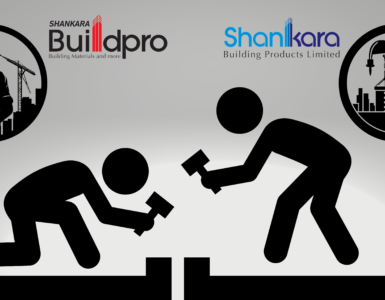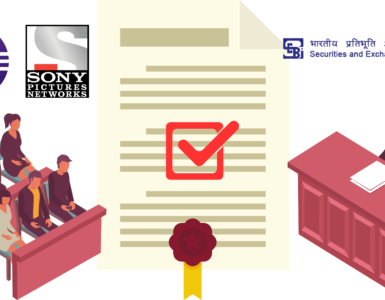In the September article, we looked at the critical role of measurements in improving the probability of success of M&A.
Throughput, Investment and Operating Expenses (T, I, OE) must be used to measure performance and the impact of decisions. To recap, Throughput = Sales less Truly Variable cost. I = Fixed + Current Assets. OE = Operating Expenses
T, I, OE may look simplistic and just another set of reworded measurements. However many organizations have experienced better decision making and results; readers are encouraged not to believe this but to try these out in their organization on real decisions and judge for themselves. There will be many opportunities. For example, decisions involving Capital Expenditure, Buy vs Make, Product Introduction & Withdrawal, Order pricing, etc. Let us now turn to this month’s article.
M&A, Divestiture, Spin-offs, making an investment in a company are major decisions and involves significant changes.Various studies have shown a big gap between expected and actual benefits in case of many M&A transactions. Some M&A transactions not only do not add value they end up destroying value. The same is true for ROI derived from many investments made by Private Equity and Venture Capital funds.
Is it possible to improve the process of target identification and due diligence to improve the M&A success? Yes, we think so. We term the process as Decisive Diligence, briefly described below:
In order for Acquisition transaction to be regarded as success, combined T/OE and T/I should grow and continue to grow at a significantly faster rate. (Remember from previous article that T, I, OE are directly connected to Net Profit, Cash Flow and ROI). This can happen only if –
- T grows post acquisition due to better distribution or cross-selling of each other products or even if T remaining constant.
- OE significantly comes down due to synergy of operations,
- I comes down i.e. you are able to identify certain fixed assets as surplus and are sold off or current assets are reduced.
Generally, high and consistently growing T/OE and T/I indicates a business which has a competitive edge (CE) in the market; conversely low and stagnant / declining ratios indicate business which has no competitive edge and is completely at the mercy of the market/business cycles and serendipity.
Competitive edge is about fulfilling a significant need of the customer in a manner which competitors cannot easily copy.
In order to develop competitive edge, it is important to understand the customer needs, at times better than customer herself!
The first step is to list the chronic problems faced by company’s customers related to company product or service. For e.g. products are not available as per committed date, it takes too long to deliver the product, spares are not available in time, etc. These are called Undesirable Effects (UDEs) and are caused by the company and not the customer!
Second step is NOT to solve problems one-by-one independently, but it is to find cause-effect connection between different UDEs and find few causes (core cause) which are leading to majority of the UDEs. In Theory of Constraints (TOC) language, this representation is called Market Current Reality Tree (Market CRT).
We can safely assume that managers in the company have made various efforts to overcome chronic problems through implementation of many projects based on process re-engineering, technology investment, etc.
There is no lack of effort or dedication on part of managers. No point in blaming them!
Let’s blame the wrong assumptions (thinking) behind these problems.
TOC provides a Thinking Process tool called Cloud to verbalize the dilemmas and the assumptions which have prevented resolving these problems.
Example of Cloud is given below. Action 1 and Action 2 are in conflict, both cannot be done at the same time. Blue arrows represent the assumptions. The cloud can be solved when we verbalize assumptions and then find one or more wrong assumptions.
The company has to focus on core cause and solve it to remove major UDEs for the customer and itself.
How is all this relevant from M&A viewpoint?
In our experience as a first step, the company will be able to overcome the core cause by changing its policies, measurements, planning, and execution. This will provide it with a competitive edge which can sustain for some length of time before its competitors can catch up. For e.g. company can improve its Availability and Reliability by making few changes within the company. This will provide a nice initial increase in sales, throughput and profits.
However, as the company moves along this path and seeks to capitalize on its competitive edge and/or develop another competitive edge, it may have to look for acquisition to plug the missing capabilities. For e.g. the same company may have weak distribution set-up in an important geography and a possible option could be to acquire a Distribution Company with warehouses and customer relationships in that geography to capitalize on its competitive edge of Availability and Reliability.
While evaluating targets and due diligence, company has to check if the target company will help to build, enhance and capitalize on its competitive edge. Only then there is a possibility that M&A will create value through higher T/OE and T/I.
M&A Critique readers are part of the M&A ecosystem and will be in the process of executing M&A transactions.
Do you want to try out the Decisive Diligence process in your current transactions to improve the success of M&A? Do write below with your feedback and thoughts.
This article is written by Mr. Aniruddha Joshi. He is a Principal Consultant with Avenir Management Consulting India Firm.




